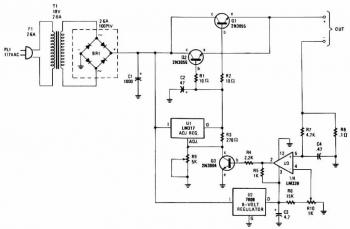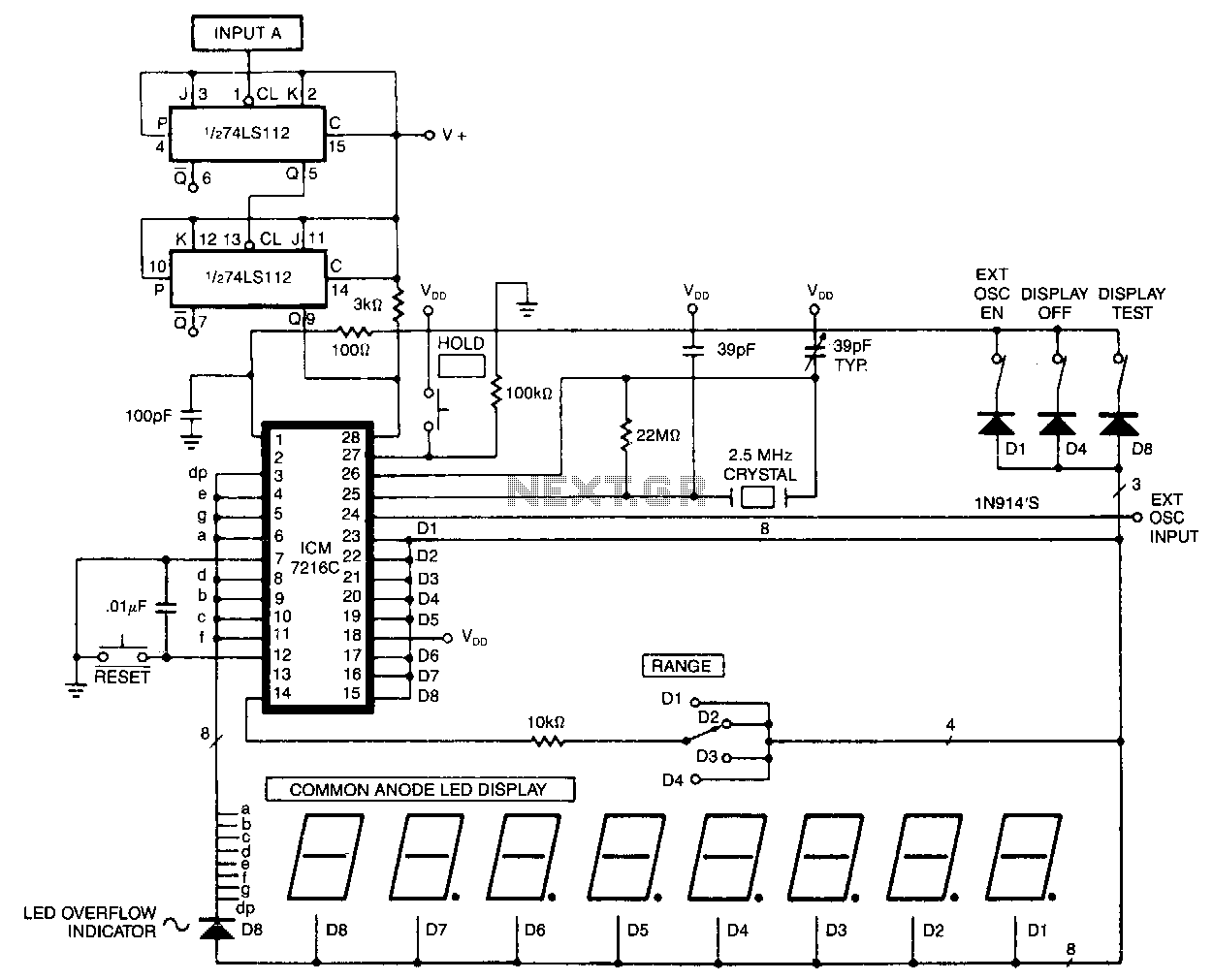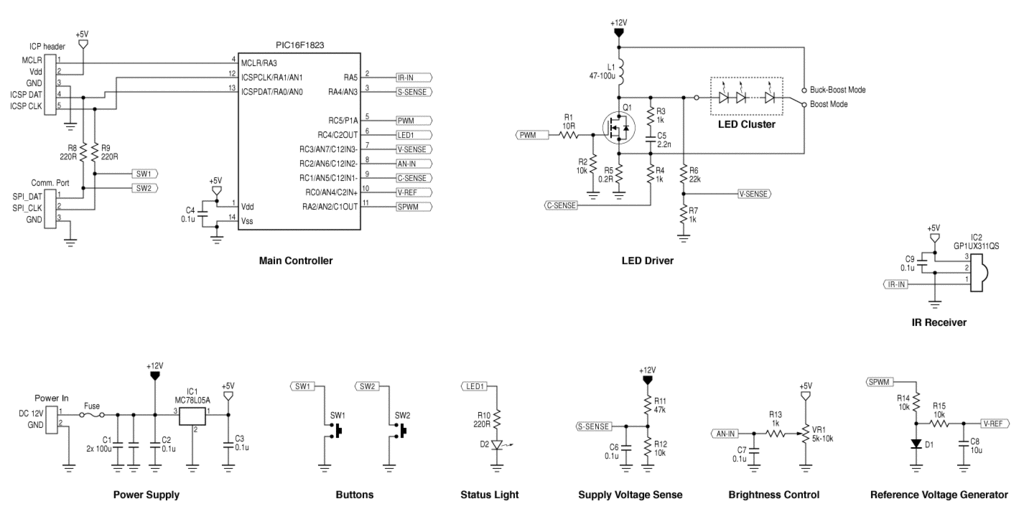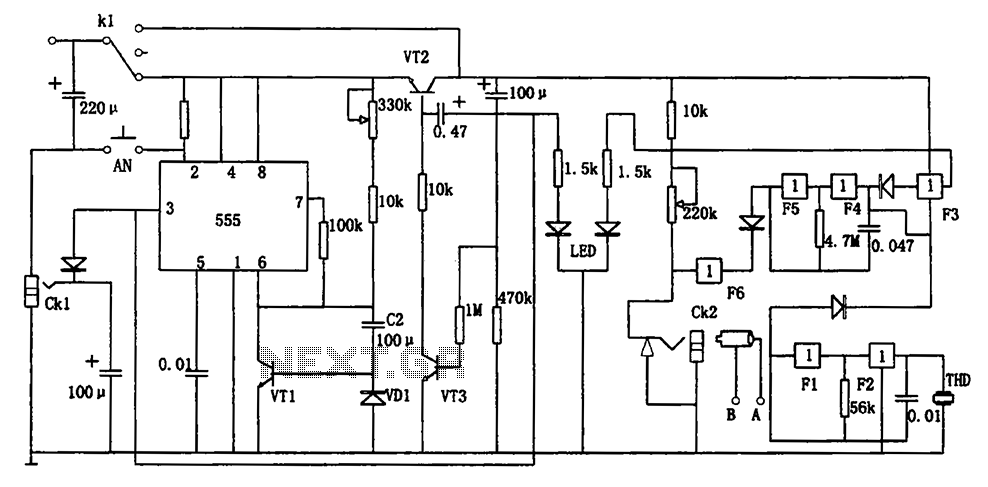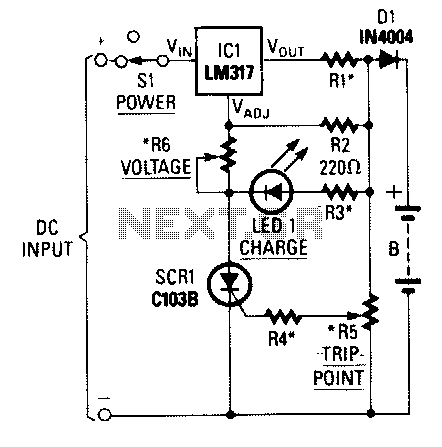
Universal PSU

A Universal Power supply based on the L200 regulator, which includes an outboard pass transistor to boost output currents up to 4 amps.
The described universal power supply circuit utilizes the L200 voltage regulator, a versatile component capable of providing adjustable output voltages. The L200 can regulate voltages in the range of 3V to 32V and is designed to deliver a maximum output current of 2A. However, to achieve higher output currents, the circuit incorporates an external pass transistor, which can increase the current capacity to a maximum of 4A.
The configuration typically includes the L200 connected in a feedback loop with resistors to set the desired output voltage. The pass transistor, often a power NPN transistor, is connected in parallel to the output of the L200. This arrangement allows the pass transistor to take on the excess current load when the output demand exceeds the capacity of the L200 regulator alone.
Key components of the circuit include:
1. **L200 Regulator**: This component serves as the primary voltage regulator. It features a built-in reference voltage and error amplifier, allowing for precise voltage regulation.
2. **Pass Transistor**: The selection of the pass transistor must be suitable for the required output current and voltage specifications. Common choices include the TIP3055 or similar power transistors.
3. **Resistors**: Resistors are used to set the output voltage and can be configured as a voltage divider. Additionally, a resistor may be placed in series with the base of the pass transistor to control its operation based on the output load.
4. **Capacitors**: Input and output capacitors are essential for stabilizing the voltage and filtering out noise. A larger output capacitor can help maintain voltage stability during transient loads.
5. **Diodes**: Protection diodes may be included to prevent reverse polarity and to protect the circuit from voltage spikes.
The circuit should also include thermal management considerations, as both the L200 and the pass transistor may generate significant heat under high load conditions. Heatsinks should be employed to dissipate heat effectively and ensure reliable operation.
Overall, this universal power supply design is suitable for various applications requiring adjustable voltage and higher output currents, making it a flexible solution for powering electronic devices.A Universal Power supply based on the L200 regulator, which includes an outboard pass transistor to boost output currents up to 4 amps. 🔗 External reference
The described universal power supply circuit utilizes the L200 voltage regulator, a versatile component capable of providing adjustable output voltages. The L200 can regulate voltages in the range of 3V to 32V and is designed to deliver a maximum output current of 2A. However, to achieve higher output currents, the circuit incorporates an external pass transistor, which can increase the current capacity to a maximum of 4A.
The configuration typically includes the L200 connected in a feedback loop with resistors to set the desired output voltage. The pass transistor, often a power NPN transistor, is connected in parallel to the output of the L200. This arrangement allows the pass transistor to take on the excess current load when the output demand exceeds the capacity of the L200 regulator alone.
Key components of the circuit include:
1. **L200 Regulator**: This component serves as the primary voltage regulator. It features a built-in reference voltage and error amplifier, allowing for precise voltage regulation.
2. **Pass Transistor**: The selection of the pass transistor must be suitable for the required output current and voltage specifications. Common choices include the TIP3055 or similar power transistors.
3. **Resistors**: Resistors are used to set the output voltage and can be configured as a voltage divider. Additionally, a resistor may be placed in series with the base of the pass transistor to control its operation based on the output load.
4. **Capacitors**: Input and output capacitors are essential for stabilizing the voltage and filtering out noise. A larger output capacitor can help maintain voltage stability during transient loads.
5. **Diodes**: Protection diodes may be included to prevent reverse polarity and to protect the circuit from voltage spikes.
The circuit should also include thermal management considerations, as both the L200 and the pass transistor may generate significant heat under high load conditions. Heatsinks should be employed to dissipate heat effectively and ensure reliable operation.
Overall, this universal power supply design is suitable for various applications requiring adjustable voltage and higher output currents, making it a flexible solution for powering electronic devices.A Universal Power supply based on the L200 regulator, which includes an outboard pass transistor to boost output currents up to 4 amps. 🔗 External reference
